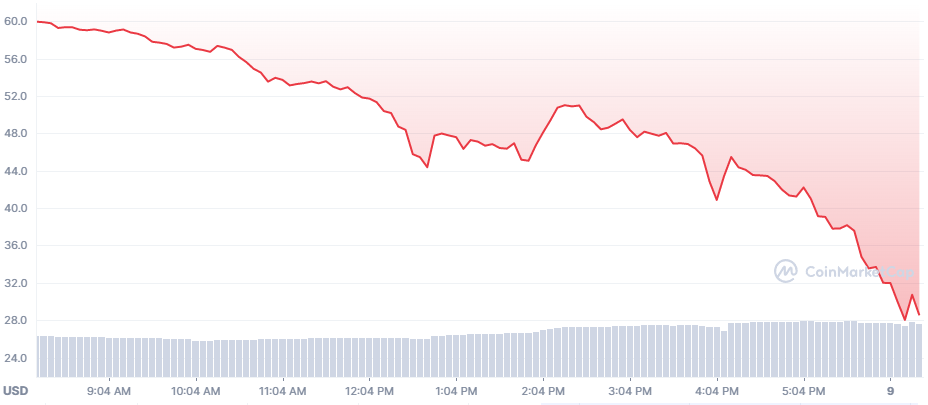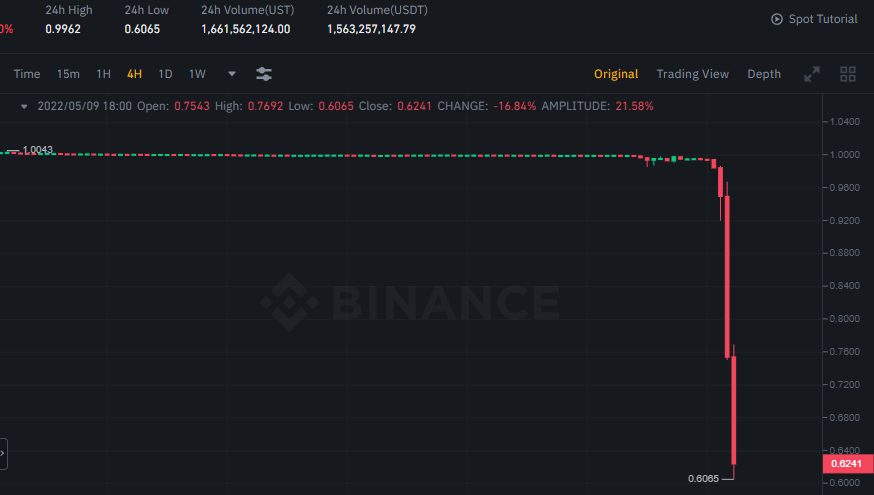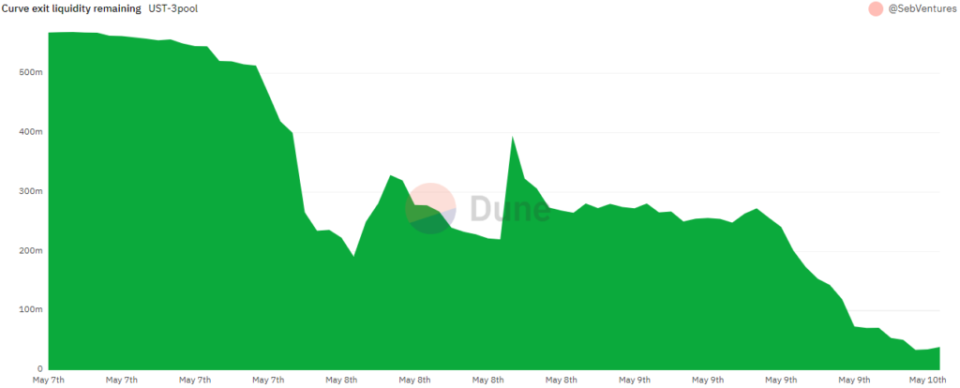Terra’s UST De-Pegs by 40%, Raising Questions About Feasibility of Algorithmic Stablecoins The algorithmic stablecoin dropped below its $1 peg as the LUNA token plunged.
Terra’s stablecoin UST, the poster child for decentralized assets tied to the US dollar, is off its peg by the most ever as its backbone, the LUNA token, dives.
LUNA is in free-fall, down 55% at $28.7, as heavy selling continues in late evening trading in New York. UST dropped to as low as $0.60, 40% off its $1 peg, and was trading at $0.66 at the time of writing.

UST has been the most successful example of an algorithmic stablecoin, or a stable asset which depends on an internal algorithm that manages its supply and demand to maintain its peg. Developers have tried to create these self-regulating assets for years, with many crashing and burning along the way.
In Terra’s case, 1 UST can always be redeemed for $1 worth of LUNA. This mechanism incentivizes arbitrageurs to buy UST when it trades under $1, redeem it for $1 worth of LUNA, and sell the LUNA for a profit. Conversely, when UST trades above $1, investors can mint 1 UST with $1 worth of LUNA and sell the UST for a profit.
A crisis of confidence has ensnared UST as investors are exiting their holdings en masse.
UST is trading at 66 cents on the dollar with nearly $1.7B in trading volume on the centralized exchange Binance alone.

Warning Signs
The trouble began on May 7 when a few large investors sold more than $500M in UST positions on Anchor, the popular savings protocol that serves as the largest supply sink for UST.
Deposits on Anchor have fallen by half since Friday from $14B to $7B.

At the time, Terra brushed off concerns, but the market wasn’t so sure as LUNA, the token backing UST, started to deepen its slide.

The steady depletion of liquidity from the UST Curve pool as users swapped UST for other stablecoins can be seen in this Dune dashboard.

LFG Steps In With $1.5B
Earlier today, the Luna Foundation Guard (LFG) deployed $1.5B of its reserves in an attempt to defend the UST peg. According to the project, $750M worth of Bitcoin and $750M have been loaned to market makers to support peg restoration efforts.


Despite these moves, investors began to panic after the market capitalization of LUNA fell below that of UST just after 1pm Eastern time, meaning there is simply not enough value in LUNA to back all the UST in circulation, not considering the recently constructed LFG reserve.
What does that mean? If the circulating UST is worth more than the market cap of LUNA, it’s not possible for all UST holders to redeem their tokens for $1 worth of LUNA if they wish to. The resulting stampede for the exits is the dreaded ‘bank run’ scenario that has laid waste to numerous algorithmic stablecoins including the infamous implosion of Iron Finance last year.
The last time this happened was in May 2021, and UST briefly de-pegged before recovering.
On a bloody day in crypto markets, Terra also came under fire for allegedly selling Bitcoin and Ether and compounding a bad situation.

Risk To Crypto
“UST was always a systematic risk for crypto. If the peg is not restored through natural demand LFG needs to tap into their reserves to prop it up themselves by selling BTC and buying UST,” crypto trader Cantering Clark told The Defiant.
“So UST drops, the market freaks out because they know what it means for LFG Bitcoin reserves, and a feedback loop creates a ton of downward pressure as people panic.”
Cantering Clark
The carnage also resulted in a string of liquidations on Abracadabra’s Degenbox, which allows investors to leverage the yield offered by Anchor.

Terra says that its ‘A-Team’ has been assembled to spearhead a recovery.
Owen Fernau contributed reporting.
Read the original post on The Defiant



